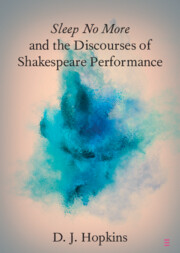Element contents
Sleep No More and the Discourses of Shakespeare Performance
Published online by Cambridge University Press: 24 January 2024
Summary
- Type
- Element
- Information
- Online ISBN: 9781009436908Publisher: Cambridge University PressPrint publication: 22 February 2024

